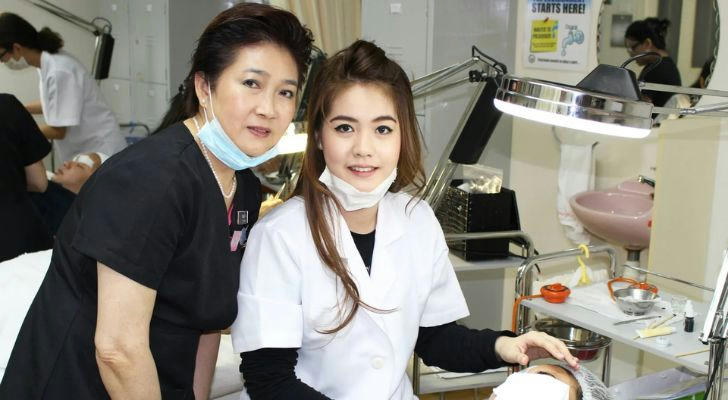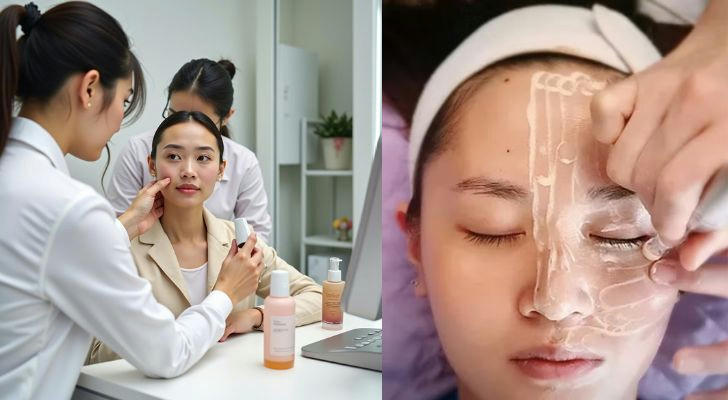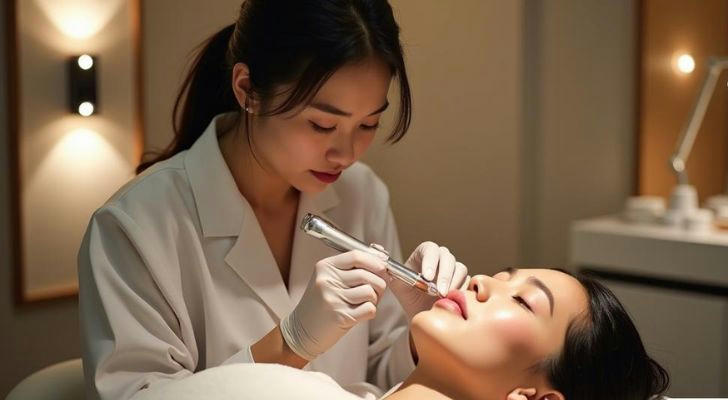Beauty Training: Unlocking Professional Skills and Career Opportunities
The beauty industry is expanding at an alarming rate. From basic skin care to high-end medical beauty, the market demand for professional talents continues to rise. However, the rapid development of the industry has also brought new challenges: accelerated technological iteration, higher consumer requirements, and increasingly stringent service standards. Against this background, systematic beauty training has become a must for practitioners to enhance their core competitiveness.

First, The necessity of beauty training: a ladder from entry to mastery
The beauty industry seems to have a low threshold, but in fact it has extremely high requirements for professional knowledge and skills. Practitioners who have not received systematic training may cause skin problems for customers due to improper operation, and even face legal risks. For example, incorrect laser parameter settings may cause burns, and unscientific skin care advice may cause sensitive skin to deteriorate.
The value of professional training lies in:
Standardized process learning: Master disinfection specifications, instrument operation steps, customer evaluation methods, etc. to ensure service safety and compliance;
Technology update synchronization: For example, new technologies such as "microcurrent lifting" and "radio frequency anti-aging" that have become popular in recent years require training to master the principles and operations;
Professional qualification acquisition: Most countries require beauticians to be certified before they can work, and training is a necessary preparation for obtaining certificates (such as CIDESCO, ITEC).

Second, curriculum system design: in-depth combination of theory and practice
High-quality beauty training courses usually cover three modules:
1. Dermatology and pathology foundation
Students need to systematically learn the skin structure, the causes of common problems (such as acne, spots, sensitive skin), and ingredient analysis (such as the whitening mechanism of niacinamide and the moisturizing principle of hyaluronic acid). For example, for customers with rosacea, it is necessary to avoid using products containing alcohol or strong acidity.
2. Practical skills enhancement
Including:
Basic care: cleansing techniques, massage intensity, mask application time control;
Instrument operation: such as photorejuvenation instrument energy regulation, Thermage probe usage specifications;
Emergency treatment: allergic reaction first aid, repair plan after operation error.
3. Customer management and service design
Through case analysis, learn how to customize skin care plans according to customers' skin type, budget, and living habits, and use communication skills to establish long-term trust relationships.

Third, training model innovation: flexible adaptation to learning needs
Traditional offline training still occupies the mainstream, but digital transformation has spawned a variety of learning methods:
Offline immersive training: In a classroom equipped with professional beauty beds and instruments and equipment, students can perform real-life operations, and teachers can correct manual errors immediately. For example, an institution adopts a small class system of "1 instructor + 5 students" to ensure that each person completes 3 complete nursing process drills every day.
Online theory courses: Through live broadcasts, skin physiology, product ingredient analysis and other content are explained, supplemented by 3D animations to demonstrate the cell repair process, helping students understand abstract concepts.
Hybrid learning system: For example, the "online preview + offline practice + AI simulation assessment" mode, students can watch the operation video repeatedly, and then use VR equipment to simulate the care scenarios of customers with different skin types.
Fourth, industry certification system: a pass for career development
The world's mainstream beauty certifications include:
International qualifications: For example, CIDESCO (International Certification of Beauty Therapists) requires 500 hours of theoretical study and 200 hours of practice;
Domestic certification: The "Beautician Professional Qualification Certificate" issued by the Ministry of Human Resources and Social Security of China is divided into five levels from elementary to advanced;
Brand authorization certificate: Product operation certification provided by high-end brands such as SkinCeuticals and Valmont helps practitioners enter high-end beauty salons.
Continuing education is also critical. For example, the Korean Beauty Association requires certificate holders to complete a 40-hour refresher course every two years, covering new technologies, health regulations updates, etc.
Fifth. Future Trends: Technology Empowerment and Personalized Services
Beauty training is undergoing three major changes:
1.Intelligent teaching tools: AI skin detectors can generate customer skin quality reports, and students need to learn how to interpret data and develop plans;
2.Customized course development: In response to the different needs of medical beauty consultants and SPA managers, training institutions have launched special training in subdivided fields;
3.Sustainable development concept: Teach students to choose environmentally friendly packaging products, reduce the use of disposable consumables, and respond to the global green beauty initiative.
From basic techniques to cutting-edge technology, beauty training is redefining industry standards. It not only helps practitioners avoid occupational risks, but also gives them the ability to grasp market trends and expand their careers. Whether you are a novice or a senior beautician, continuous participation in training will be the core strategy to the top of the industry.
